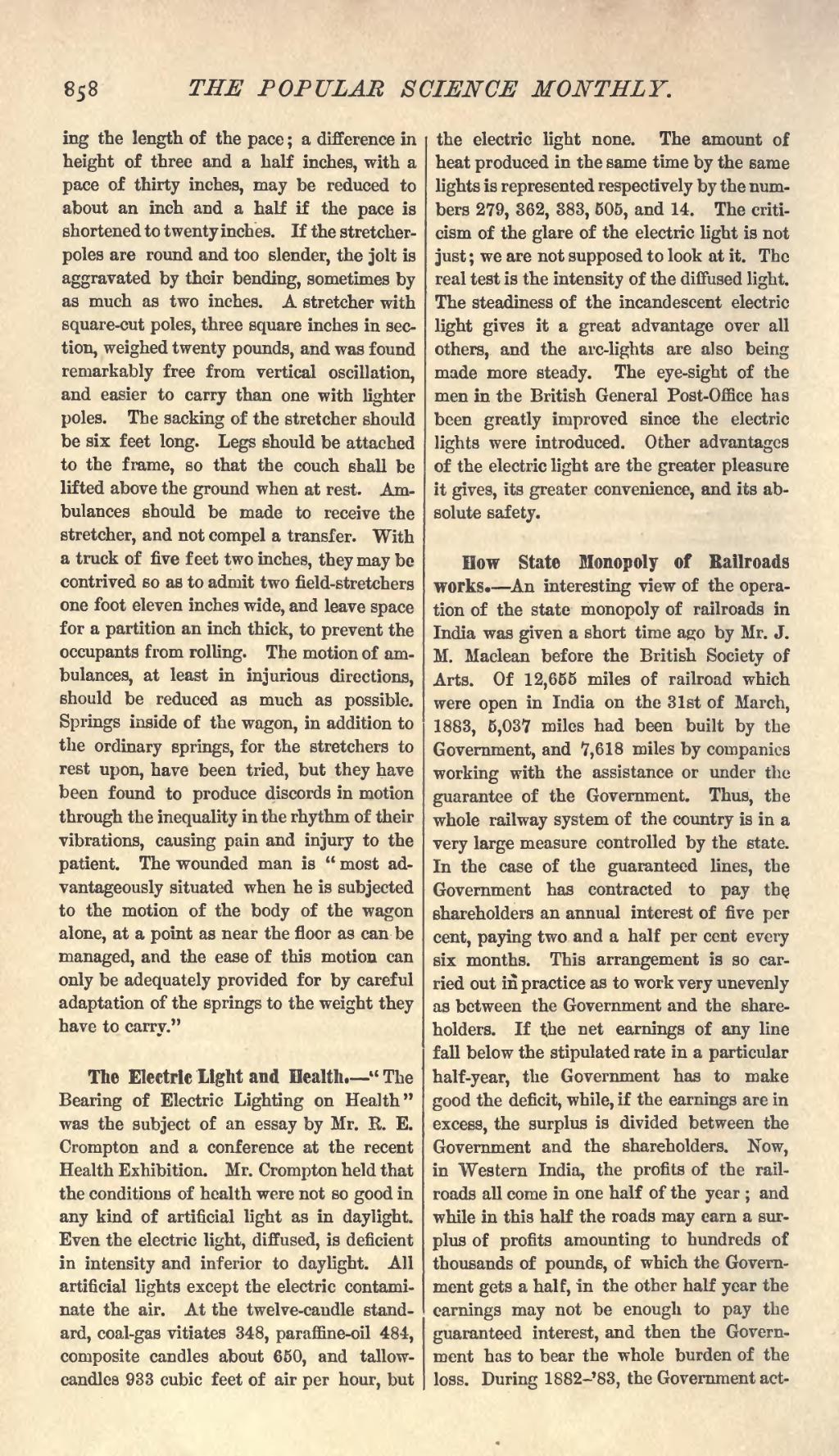ing the length of the pace; a difference in height of three and a half inches, with a pace of thirty inches, may be reduced to about an inch and a half if the pace is shortened to twenty inches. If the stretcher-poles are round and too slender, the jolt is aggravated by their bending, sometimes by as much as two inches. A stretcher with square-cut poles, three square inches in section, weighed twenty pounds, and was found remarkably free from vertical oscillation, and easier to carry than one with lighter poles. The sacking of the stretcher should be six feet long. Legs should be attached to the frame, so that the couch shall be lifted above the ground when at rest. Ambulances should be made to receive the stretcher, and not compel a transfer. With a truck of five feet two inches, they may be contrived so as to admit two field-stretchers one foot eleven inches wide, and leave space for a partition an inch thick, to prevent the occupants from rolling. The motion of ambulances, at least in injurious directions, should be reduced as much as possible. Springs inside of the wagon, in addition to the ordinary springs, for the stretchers to rest upon, have been tried, but they have been found to produce discords in motion through the inequality in the rhythm of their vibrations, causing pain and injury to the patient. The wounded man is "most advantageously situated when he is subjected to the motion of the body of the wagon alone, at a point as near the floor as can be managed, and the ease of this motion can only be adequately provided for by careful adaptation of the springs to the weight they have to carry."
The Electric light and Health.—"The Bearing of Electric Lighting on Health" was the subject of an essay by Mr. R. E. Crompton and a conference at the recent Health Exhibition. Mr. Crompton held that the conditions of health were not so good in any kind of artificial light as in daylight. Even the electric light, diffused, is deficient in intensity and inferior to daylight. All artificial lights except the electric contaminate the air. At the twelve-candle standard, coal-gas vitiates 348, paraffine-oil 484, composite candles about 650, and tallow-candles 933 cubic feet of air per hour, but the electric light none. The amount of heat produced in the same time by the same lights is represented respectively by the numbers 279, 362, 383, 505, and 14. The criticism of the glare of the electric light is not just; we are not supposed to look at it. The real test is the intensity of the diffused light. The steadiness of the incandescent electric light gives it a great advantage over all others, and the arc-lights are also being made more steady. The eye-sight of the men in the British General Post-Office has been greatly improved since the electric lights were introduced. Other advantages of the electric light are the greater pleasure it gives, its greater convenience, and its absolute safety.
How State Monopoly of Railroads works.—An interesting view of the operation of the state monopoly of railroads in India was given a short time ago by Mr. J. M. Maclean before the British Society of Arts. Of 12,655 miles of railroad which were open in India on the 31st of March, 1883, 5,037 miles had been built by the Government, and 7,618 miles by companies working with the assistance or under the guarantee of the Government. Thus, the whole railway system of the country is in a very large measure controlled by the state. In the case of the guaranteed lines, the Government has contracted to pay the shareholders an annual interest of five per cent, paying two and a half per cent every six months. This arrangement is so carried out in practice as to work very unevenly as between the Government and the shareholders. If the net earnings of any line fall below the stipulated rate in a particular half-year, the Government has to make good the deficit, while, if the earnings are in excess, the surplus is divided between the Government and the shareholders. Now, in Western India, the profits of the railroads all come in one half of the year; and while in this half the roads may earn a surplus of profits amounting to hundreds of thousands of pounds, of which the Government gets a half, in the other half year the earnings may not be enough to pay the guaranteed interest, and then the Government has to bear the whole burden of the loss. During 1882-'83, the Government act-
